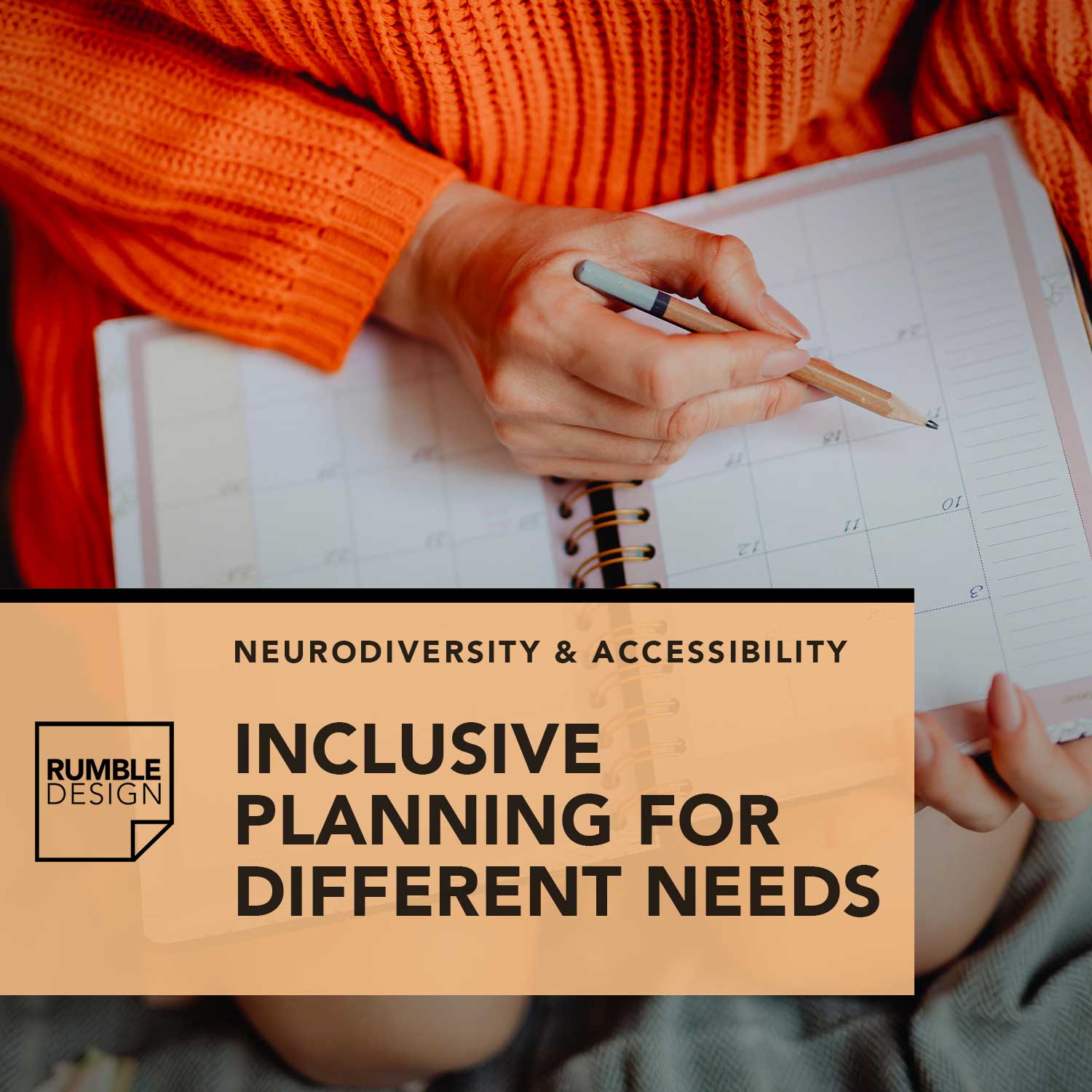
What is Neurodiversity?
Neurodiversity is a fancy way of saying that everyone’s brain works differently. Some people might be really good at solving puzzles, while others might be great at drawing or telling stories. This diversity includes people with conditions like autism, ADHD, and dyslexia.
These conditions can make certain tasks harder, like focusing on a long list of to-dos or reading a lot of text quickly. But they also come with amazing strengths, like creative thinking and problem-solving.
For example, someone with ADHD might find it hard to sit still or focus on one task for a long time. Traditional planners that have long lists and tight schedules might make them feel overwhelmed. On the other hand, a person with dyslexia might struggle with reading lots of text and could benefit from a planner that uses more images or symbols.
What is Accessibility?
Accessibility means making sure that everyone, no matter their abilities, can use and enjoy things. When it comes to planners, this means creating tools that are easy for everyone to use. It’s not just about making planners that look nice; it’s about making them functional for all kinds of users.
Imagine trying to use a planner that’s too crowded with information, making it hard to find what you need. Or maybe the planner uses colors that are difficult for people with color blindness to see. Accessibility is about fixing these problems so that everyone can plan their day effectively.
Why Are Neurodiversity and Accessibility Important?
When we think about neurodiversity and accessibility, we make life better for everyone. Planners that are designed with these ideas in mind help people work smarter, not harder. They reduce stress and make it easier to focus on what’s important. Plus, they empower everyone to be more independent and confident in their daily lives.
At Rumble Design, we believe that planners should be more than just a tool to jot down tasks. They should be a friendly guide that helps you navigate your day in a way that works best for you. That’s why our planners are designed to be flexible, simple, and easy to use.
How Rumble Design Planners Help Neurodiverse Individuals
Let’s take a closer look at how our planners can support neurodiverse individuals:
- Flexible Layouts: Our Ultimate Printable Planner Bundle is a great example of flexibility. It includes daily, weekly, and monthly layouts, so you can choose the one that suits your needs best. If you prefer to see the big picture, the monthly planner gives you a broad overview. If breaking tasks down into smaller steps works better for you, the weekly or daily planners are perfect.
- Simple and Clean Design: A cluttered planner can be overwhelming, especially for someone with ADHD or anxiety. That’s why we keep our designs simple. For instance, our Task Priority Matrix helps you focus on what’s urgent and important, without drowning in unnecessary details. This clarity can make it easier to tackle tasks without feeling overloaded.
- Visual Aids: Visual learners, especially those with dyslexia, benefit from planners that use symbols, icons, or colour-coding to organize information. You can personalize our planners by adding your own visual cues, making it easier to navigate your day. This can help you quickly identify tasks and priorities at a glance.
- Routine Building: Consistency can be comforting, especially for individuals with autism who thrive on routine. Our daily planners can help establish and maintain these routines, providing a structured environment that reduces stress and increases productivity.
How to Make the Most of Our Planners
Here are some tips on how you can use our planners to boost your productivity and make your day run smoother:
- Customize Your Planner: Don’t be afraid to make your planner your own. Add stickers, doodles, or colour-coding to help you keep track of tasks. Personalizing your planner can make it more engaging and easier to use.
- Set Realistic Goals: Use the weekly and monthly layouts to set achievable goals. Break down big tasks into smaller, more manageable steps. This not only makes your tasks seem less daunting but also gives you a clear path to follow.
- Use Visual Reminders: If you’re a visual learner, try using different colors or symbols for different types of tasks. For example, you could use a star for important tasks or a green checkmark for completed ones. This can help you quickly see what needs to be done.
- Review and Reflect: At the end of the week or month, take a moment to review what you’ve accomplished. Reflecting on your progress can be motivating and help you adjust your planning strategies for the future.

Why We Care About Accessibility
At Rumble Design, we care deeply about making sure our products are accessible to everyone. We understand that each person is unique, and our planners are designed to accommodate those differences. Whether you’re neurodiverse or just looking for a simpler way to organize your life, our planners are here to help.
Want to learn more about creating an inclusive environment? Check out this guide to accessibility in everyday life and see how you can make your world a little more welcoming to everyone.



